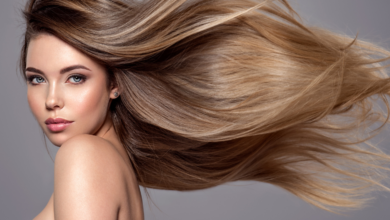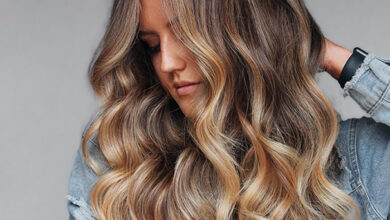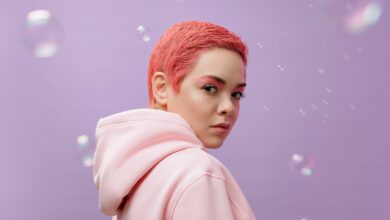
As fall approaches, it’s time to warm things up with our deep dive into “Shades Of The Sun: Exploring Warm Hair Colors.” Dive into a realm of fiery reds, golden blondes, and everything in between. Whether you’re itching for a total hair transformation or a subtle shade shift, we’ve curated a selection of hues and tips that promise to ignite your inspiration. So, pour yourself a cozy cup of coffee and join us in celebrating the rich, radiant colors of the season. Let’s find your perfect warm shade!
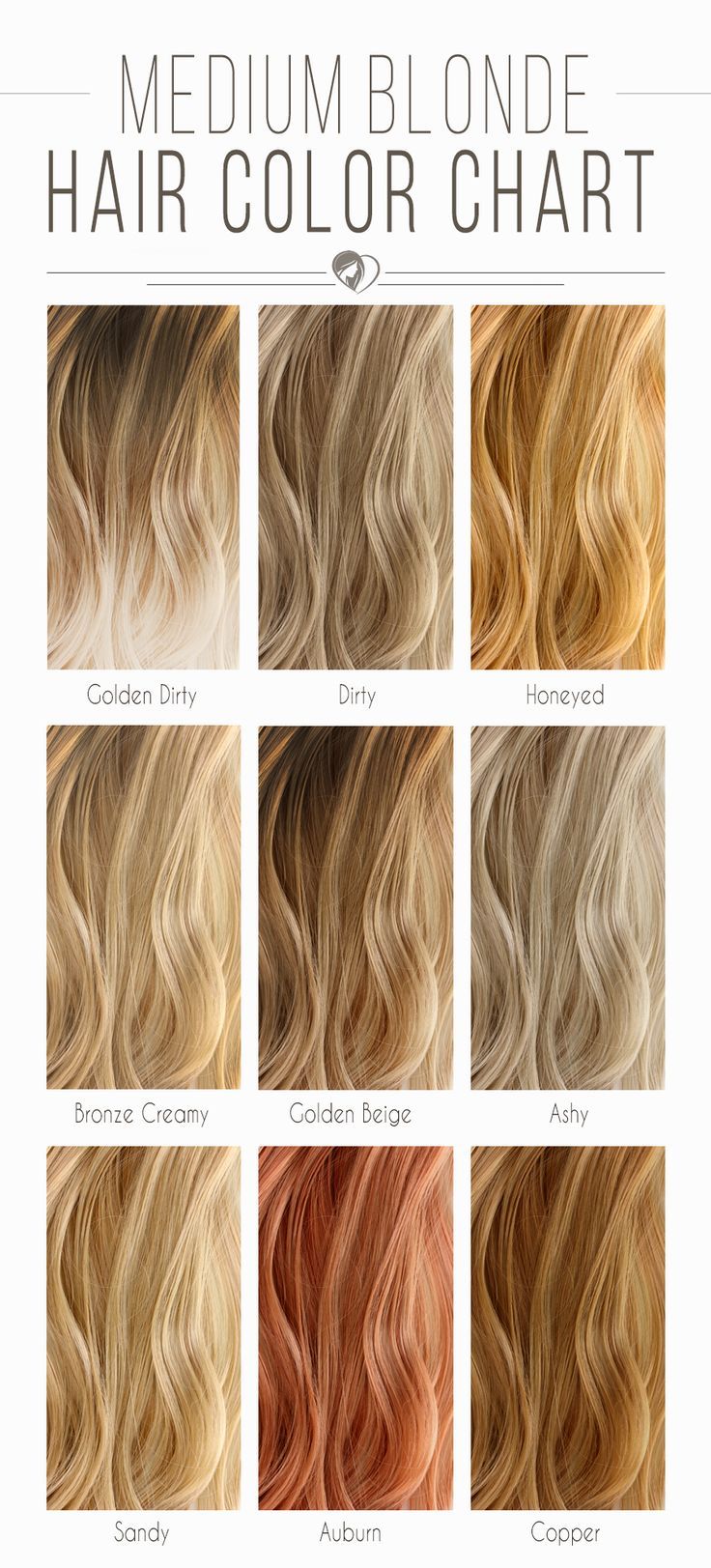
Benefits of Warm Hair Colors
Enhances Skin Tone
Warm hair colors, such as honey blonde, caramel brown, and copper red, can do wonders for enhancing your skin tone. These colors have undertones that complement various skin tones, providing a natural and radiant glow. They can help to warm up pale or cool-toned skin, adding warmth and brightness to your complexion. Warm hair colors can also help to minimize the appearance of imperfections, giving your skin a more even and flawless look.
Adds Dimension to Hairstyle
Another great benefit of warm hair colors is that they add dimension and depth to your hairstyle. These colors have a richness and vibrancy that can instantly transform your look. Whether you choose to go for a subtle golden brown or a striking strawberry blonde, the warm tones will create beautiful highlights and lowlights throughout your hair, adding texture and movement. This extra dimension can make your hairstyle look more interesting and dynamic.
Creates a Sun-Kissed Look
Warm hair colors are also known for their ability to create a sun-kissed look. These shades resemble the natural hues that the sun imparts on your hair during the summer months. Whether you opt for a ginger shade that mimics the fiery glow of the sun or a golden brown that replicates the shimmering warmth of sunlight, these colors can instantly make you look as if you’ve spent hours basking in the sun. The sun-kissed effect can give you a youthful and radiant appearance, even during the colder months.

Popular Warm Hair Colors
Honey Blonde
Honey blonde is a beautiful warm hair color that suits a wide range of skin tones. It has a golden undertone that adds warmth and brightness to your complexion. This shade works particularly well for those with fair or medium skin tones and can instantly brighten up your overall look. Honey blonde is a versatile color that can be customized to suit your preferences, ranging from a light, honey-toned hue to a deeper, richer caramel shade.
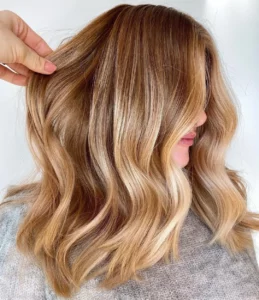
Caramel Brown
Caramel brown is a stunning warm hair color that adds depth and richness to your locks. This shade has a mix of warm brown and golden tones, resembling the delicious caramel candy. Caramel brown is highly versatile and can be tailored to suit different skin tones. It works beautifully with warm, olive, and deep skin tones, creating a harmonious and complementary effect. This color is perfect for those who want to add warmth and dimension to their hairstyle without straying too far from their natural hair color.

Copper Red
Copper red is a vibrant and eye-catching warm hair color that instantly turns heads. It has a fiery and intense undertone that can bring out the warmth in your complexion. Copper red ranges from light and bright shades to deeper and richer hues, allowing you to find the perfect variation for your skin tone. This color works particularly well for those with warm and golden undertones in their skin, as it adds a stunning contrast and creates a striking, yet natural-looking, appearance.

Strawberry Blonde
Strawberry blonde is a soft and romantic warm hair color that is reminiscent of the sweet and succulent fruit. This shade combines blonde and red tones, resulting in a delicate and feminine look. Strawberry blonde is a versatile color that can suit a variety of skin tones, but it especially complements fair and peachy complexions. This color adds a touch of warmth and brightness to your overall appearance, creating a youthful and enchanting vibe.
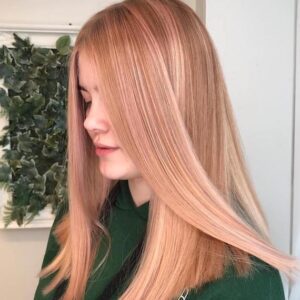
Ginger
Ginger is a warm and spicy hair color that exudes vibrancy and personality. This shade has a combination of red, orange, and golden undertones, similar to the fiery spice it is named after. Ginger hair color is bold and attention-grabbing, perfect for those who want to make a statement. It suits a range of skin tones, particularly those with warm and peachy undertones. Ginger adds warmth and depth to your hair, instantly making it look more vibrant and full of life.
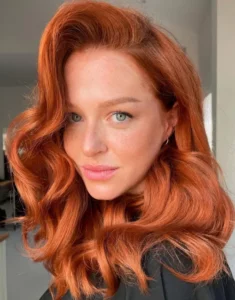
Golden Brown
Golden brown is a classic warm hair color that exudes elegance and sophistication. This shade has a mix of warm brown and golden undertones, creating a lustrous and luxurious look. Golden brown hair color is timeless and versatile, suiting a variety of skin tones. It works particularly well with warm, olive, and deep complexions, but can also complement fair skin tones beautifully. The golden undertones of this color enhance your natural features and give your hair a radiant and sun-kissed appearance.

Light Auburn
Light Auburn is a warm hair color with a reddish-brown undertone that is both rich and alluring. This shade is perfect for those who want to add warmth and vibrancy to their hair without going for a full-on red hue. Light Auburn complements a variety of skin tones, including fair, medium, and olive. It adds a touch of boldness and playfulness to your look, creating a dynamic and eye-catching hairstyle.

Amber
Amber is a warm hair color that combines golden, red, and brown tones to create a stunning and unique shade. It resembles the warm and glowing hues of amber, giving your hair a captivating and shimmery appearance. This color works well with a range of skin tones, particularly those with warm and peachy undertones. Amber adds warmth and dimension to your locks, making them look more vibrant and radiant.

Chestnut
Chestnut is a rich and warm hair color that is perfect for those who want to add depth and intensity to their locks. This shade has a mix of warm brown and red undertones, resembling the deep and earthy hues of chestnuts. Chestnut hair color works well with a variety of skin tones, particularly those with warm, olive, or golden undertones. It adds warmth and richness to your hair, making it look luxurious and sophisticated.

Mahogany
Mahogany is a mesmerizing warm hair color that has a deep and intense red undertone with hints of brown. This shade resembles the rich and enchanting hues of mahogany wood, giving your hair a luxurious and sultry appearance. Mahogany hair color suits a variety of skin tones, especially those with warm and golden undertones. It adds drama and allure to your hairstyle, making it look bold and captivating.
Choosing the Right Warm Hair Color
Choosing the right warm hair color for yourself involves considering various factors, such as your skin undertones, eye color, natural hair color, and the level of maintenance and commitment you are willing to put in.
Considering Skin Undertones
When choosing a warm hair color, it is essential to consider your skin undertones. Warm hair colors generally complement warm undertones, such as golden, peachy, or olive. These undertones tend to have yellow or golden hues, and warm hair colors can enhance their natural warmth. If your skin undertones lean towards cool tones, such as pink or blue, it’s still possible to find warm hair colors that can beautifully contrast with your skin, creating a striking look.
Matching Warm Hair Colors with Eye Color
Another factor to consider when choosing a warm hair color is your eye color. Certain warm hair colors can make your eye color pop and create a stunning contrast. For example, warm hair colors like honey blonde can make blue eyes appear even more vibrant, while shades like copper red can beautifully complement green eyes. Consider your eye color and how different warm hair colors might enhance its natural beauty.
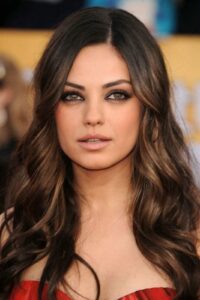
The Impact of Natural Hair Color
Your natural hair color can also influence the outcome of your warm hair color. If you have light or blonde hair, achieving warm hair colors might be easier, as your hair is already light enough to absorb the warm tones. However, if you have dark hair, you may need to lighten your hair first before applying warm hair colors to achieve the desired effect. Keep in mind that the natural pigments in your hair can interact with warm hair colors, resulting in slightly different shades than expected. It’s always a good idea to consult with a professional colorist to ensure the best possible outcome.
Maintenance and Commitment
Lastly, consider the maintenance and commitment required for your chosen warm hair color. Some warm hair colors might require more frequent touch-ups and color-refreshing than others. For example, vibrant copper red might fade faster and require more upkeep compared to a subtle golden brown. Additionally, warm hair colors often require extra care to prevent fading, such as using color-safe shampoos and avoiding excessive heat styling. Consider your lifestyle and how much time and effort you are willing to dedicate to maintaining your chosen warm hair color.
Warm Hair Colors for Different Skin Tones
Warm hair colors can beautifully complement various skin tones, ranging from fair to dark. Here are some suggestions for warm hair colors based on different skin tones:
Warm Hair Colors for Fair Skin
For fair skin tones, warm hair colors like honey blonde, strawberry blonde, and ginger can create a stunning contrast. These colors add warmth and brightness to fair complexions, resulting in a beautifully balanced and radiant look. If you prefer a darker shade, caramel brown or mahogany can also complement fair skin tones.
Warm Hair Colors for Medium Skin
If you have a medium skin tone, warm hair colors like golden brown, chestnut, and amber can enhance your natural warmth. These shades add depth and richness to your complexion, creating a harmonious and vibrant appearance. Light auburn and copper red can also be flattering for medium skin tones, as they provide a striking contrast.
Warm Hair Colors for Dark Skin
For dark skin tones, warm hair colors such as caramel brown, copper red, and mahogany can beautifully complement your complexion. These shades add warmth and intensity to dark skin, creating a captivating and rich look. Golden brown and amber can also enhance the natural glow of dark skin tones, giving your hair a luminous and radiant appearance.

Remember, while these suggestions can serve as a starting point, it’s essential to consider your individual undertones and consult with a professional colorist to find the perfect warm hair color for your skin tone.
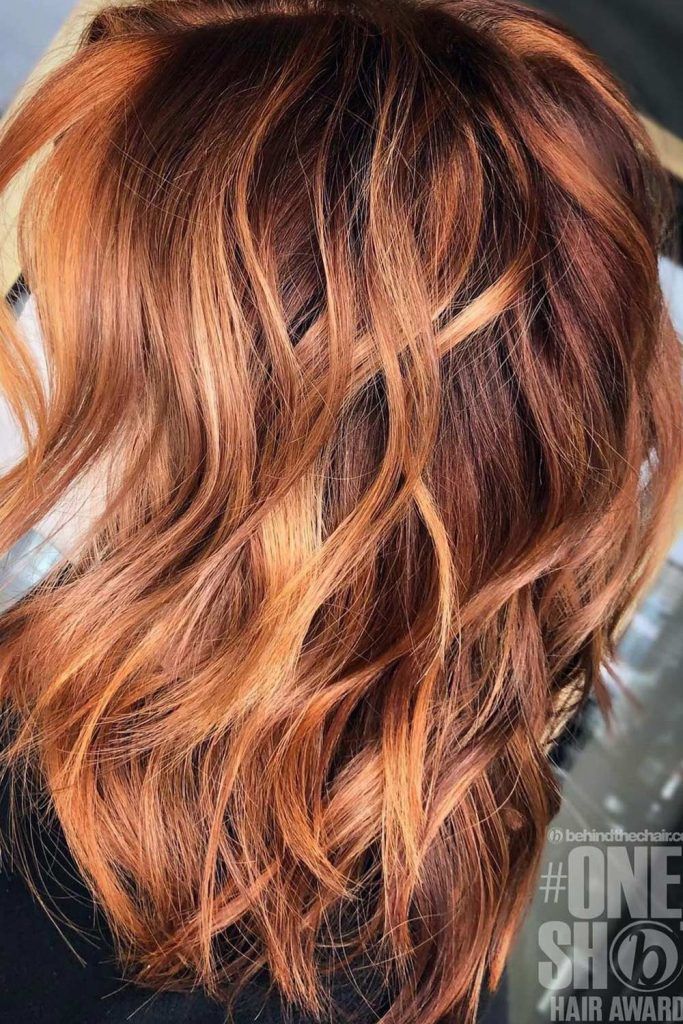
DIY Warm Hair Color Tips
If you’re feeling adventurous and want to try achieving warm hair colors at home, here are some DIY tips to help you along the way:
Preparing Hair for Color
Before coloring your hair, it’s crucial to prepare it properly. Start by washing your hair a day or two prior to coloring to allow natural oils to build up, providing some protection for your scalp. Additionally, deep condition your hair a few days before coloring to ensure it is hydrated and healthy.
Choosing the Right Hair Dye
Selecting the right hair dye is crucial to achieving your desired warm hair color. Look for hair dyes that specifically indicate warm or golden tones in the shade description. Take note of the developer strength recommended for the dye, as this will affect the intensity of the color. Consider purchasing a shade lighter than your desired outcome, as hair dyes can appear darker than expected.
Application Techniques
When applying the hair dye, carefully follow the instructions provided with the product. Divide your hair into sections, starting from the roots and working your way down to the ends. Apply the dye evenly, making sure to saturate each section thoroughly for an even and consistent color. Use gloves to protect your hands and protect your clothing and surroundings from any potential stains.
Maintaining Warm Hair Color
Once you have achieved your desired warm hair color, it’s important to maintain it properly. Use color-safe shampoos and conditioners specifically formulated for color-treated hair to minimize fading. Limit the use of heat styling tools and protect your hair from UV damage by wearing hats or applying UV-protectant sprays. Regularly touch-up and refresh your color to keep it looking vibrant and fresh.
While DIY hair coloring can be a fun and cost-effective option, be aware that professional coloring techniques and expertise can often yield the best and most desired results. If you have any doubts or concerns about achieving your desired warm hair color at home, it’s always recommended to seek the assistance of a professional colorist.
Professional Warm Hair Color Techniques
For those who prefer a professional touch and want a more customized and seamless warm hair color, here are some popular techniques to consider:
Balayage
Balayage is a French hair coloring technique that involves hand-painting highlights onto the hair, creating a natural and sun-kissed effect. This technique is perfect for achieving warm hair colors as it allows for a soft and blended transition of color. The highlights are strategically placed to enhance your natural features and create a multidimensional look.

Ombre
Ombre is a hair coloring technique that involves a gradual transition from dark roots to lighter ends. This technique can be adapted to incorporate warm hair colors, creating a stunning and seamless effect. For a warm ombre look, consider starting with a darker warm shade at the roots and gradually fading into a lighter warm shade towards the ends. This creates a beautiful gradient of color that adds depth and dimension to your hairstyle.

Highlights
Adding warm highlights to your hair is a classic and timeless technique. Highlights can be strategically placed throughout your hair to create pops of warmth and dimension. Whether you opt for a few subtle honey blonde highlights or more noticeable copper red highlights, this technique can enhance your natural hair color and give it a sun-kissed glow.
When considering professional hair coloring techniques, it’s essential to consult with a skilled colorist who can assess your hair and provide expert advice on achieving your desired warm hair color.
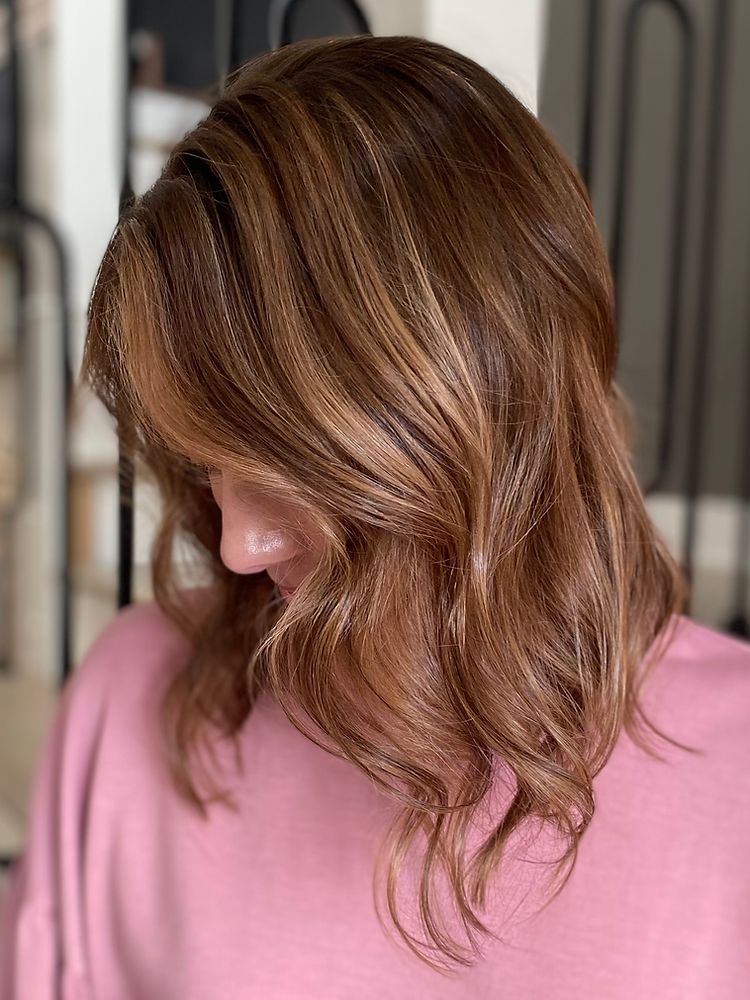
Popular Warm Hair Color Trends
The world of hair colors is constantly evolving, and there are always new trends to explore. Here are some popular warm hair color trends that you might want to consider:
Sombre
Sombre, short for “subtle ombre,” is a more subdued and natural-looking version of the traditional ombre technique. This trend involves a seamless transition from dark roots to lighter ends, but with a softer and subtler effect. Sombre is perfect for achieving warm hair colors in a more low-maintenance and effortless manner. The colors blend seamlessly, creating a naturally sun-kissed and warm appearance.
Tortoiseshell Hair
Tortoiseshell hair is a trendy warm hair color technique that takes inspiration from the natural hues found in a tortoiseshell pattern. This technique involves blending warm shades like caramel, chestnut, and amber to create a vibrant and multidimensional look. Tortoiseshell hair adds richness and warmth to your locks while providing a visually captivating effect reminiscent of the beautiful tortoiseshell pattern.
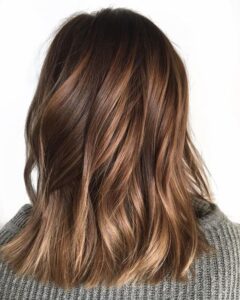
Ultra-Warm Bronde
Bronde, a combination of blonde and brown, has been a popular hair color trend for quite some time. To add a warm twist to this trend, consider opting for ultra-warm bronde. This involves incorporating warm, golden, and honey tones into the bronde palette. The result is a hair color that shimmers with warmth and radiance, creating a striking and glamorous look.
Sunset Hair
Sunset hair is a bold and vibrant warm hair color trend inspired by the stunning colors of a sunset. This technique involves blending warm shades of red, orange, and purple to create a dramatic and eye-catching look. Sunset hair adds intensity and warmth to your hairstyle, making it appear as if you’ve captured the essence of a breathtaking sunset in your locks.
As with any hair color trend, it’s important to consider your personal style, skin tone, and lifestyle before diving into a bold and trendy warm hair color. Consult with a professional colorist to determine which trend is the best fit for you.
Warm Hair Colors for Different Hair Types
No matter your hair type, whether straight, wavy, or curly, there are warm hair colors that can beautifully complement your locks. Here are some suggestions for warm hair colors based on different hair types:
Warm Hair Colors for Straight Hair
For straight hair, warm hair colors like ginger, caramel brown, and golden brown can enhance the sleekness and shine of your locks. These warm shades add dimension and vibrancy to straight hair, making it appear fuller and more dynamic.

Warm Hair Colors for Wavy Hair
Wavy hair can beautifully showcase warm hair colors that create a sun-kissed and beachy look. Consider warm hair colors like honey blonde, copper red, and amber to highlight the natural movement and texture of your waves. These colors add depth and dimension to wavy hair, giving it a radiant and tousled appearance.
Warm Hair Colors for Curly Hair
Curly hair can benefit from warm hair colors that enhance the natural bounce and definition of the curls. Warm shades like strawberry blonde, mahogany, and chestnut can add warmth and richness to curly hair, creating a vibrant and stunning look. These colors bring out the natural beauty and texture of curly hair, making it look even more luscious and voluminous.
Remember, these suggestions are meant to inspire you, but it’s crucial to consider your individual hair type and consult with a professional colorist to find the perfect warm hair color that suits your specific needs.
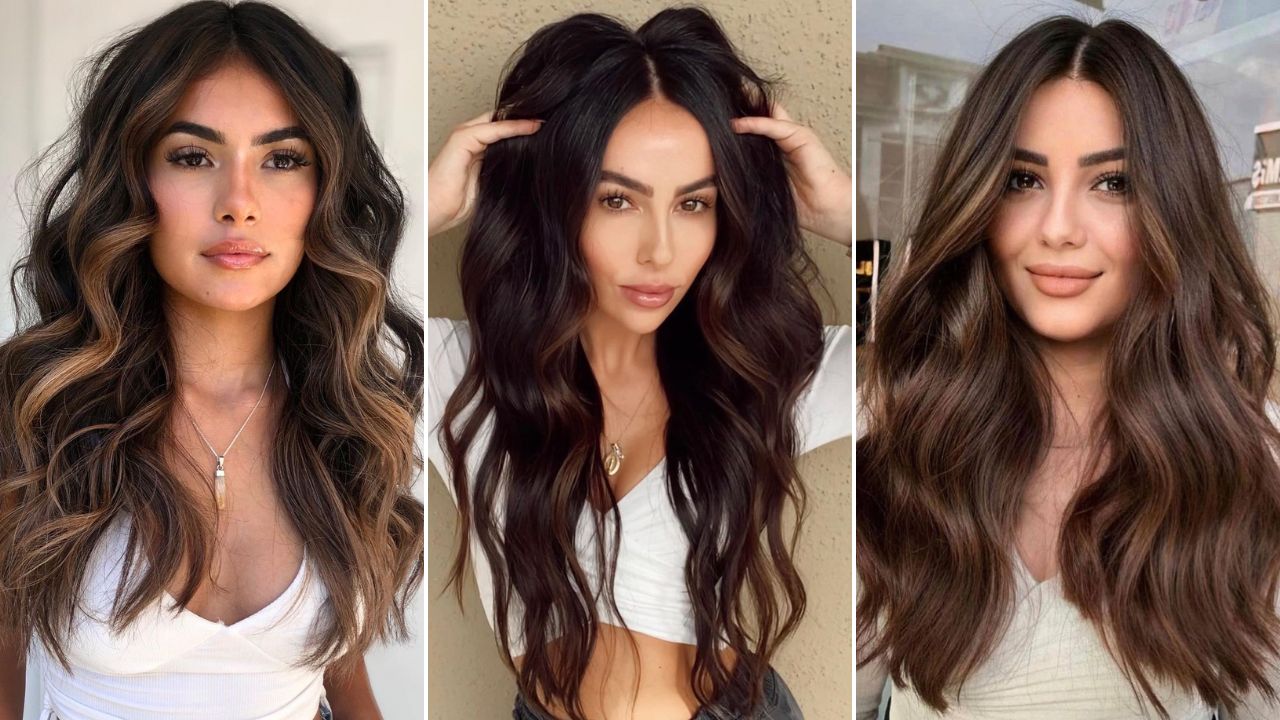
Maintaining Warm Hair Colors
Once you have achieved your desired warm hair color, it’s essential to maintain it properly to keep it looking vibrant and fresh. Here are some tips for maintaining warm hair colors:
Use Color-Safe Shampoos and Conditioners
Invest in color-safe shampoos and conditioners specifically formulated for color-treated hair. These products are gentle and help to minimize color fading. Look for shampoos and conditioners that are free of sulfates and contain moisturizing ingredients to keep your hair hydrated and healthy.
Minimize Heat Styling
Excessive heat styling can cause damage and fade your warm hair color. Minimize the use of heat styling tools like flat irons and curling irons, and opt for heatless styling methods whenever possible. If you do need to use heat styling tools, make sure to apply a heat protectant spray to minimize damage and color fading.
Protect Hair from UV Damage
UV rays can cause your warm hair color to fade more quickly. Protect your hair from UV damage by wearing hats or scarves when exposed to direct sunlight for extended periods. You can also use UV-protectant sprays or leave-in treatments designed to shield your hair from the harmful effects of the sun.
Regular Touch-Ups and Refreshes
Depending on the rate of hair growth and the intensity of your warm hair color, regular touch-ups and color-refreshing appointments are essential to maintain your desired look. Consult with your colorist to determine the recommended frequency for touch-ups and refreshes to ensure your warm hair color stays vibrant and consistent.
Avoid Over-Washing
Over-washing your hair can strip away the natural oils and color pigments, leading to color fading. Try to limit the frequency of hair washing and opt for dry shampoos or gentle cleansing methods in between washes. When you do wash your hair, use lukewarm water and focus on the roots, avoiding excessive scrubbing of the lengths and ends.
By following these maintenance tips and establishing a regular hair care routine, you can prolong the vibrancy and longevity of your warm hair color.
Warm Hair Colors vs. Cool Hair Colors
When it comes to deciding between warm hair colors and cool hair colors, it’s essential to understand the difference and how they can complement your overall look.
Warm vs. Cool Undertones
Warm hair colors have undertones that lean towards warm hues, such as gold, red, and orange. These colors create a vibrant and radiant look, adding warmth and glow to your complexion. Cool hair colors, on the other hand, have undertones that lean towards cool hues, such as blue, violet, and green. These colors create a sleek and sophisticated look, adding contrast and intensity to your overall appearance.
When determining whether warm or cool hair colors are more suitable for you, consider your skin undertones, eye color, and personal style. Warm hair colors can enhance warm undertones in your skin and make your eye color pop, while cool hair colors can create a striking and edgy contrast. It’s also important to consider your individual preference and the overall look you want to achieve.

Choosing the Right Hair Color Palette
When deciding between warm and cool hair colors, it can be helpful to consider the overall hair color palette that suits your complexion and style. For example, warm hair colors like honey blonde, caramel brown, and copper red work well together to create a cohesive and harmonious warm color palette. Similarly, cool hair colors like ash blonde, platinum blonde, and icy blue can be combined to achieve a sleek and stylish cool color palette.
Consider your skin tone, eye color, and personal style to determine which color palette resonates with you the most. You can also consult with a professional colorist who can provide expert advice and help you create a hair color palette that suits you perfectly.
In conclusion, warm hair colors offer numerous benefits, including enhancing skin tone, adding dimension to your hairstyle, and creating a sun-kissed look. Popular warm hair colors range from honey blonde to mahogany, with each shade offering unique characteristics that can beautifully complement different skin tones. When choosing the right warm hair color, it’s important to consider factors like skin undertones, eye color, natural hair color, and the level of maintenance and commitment you’re willing to undertake. Different professional techniques, such as balayage and ombre, can help achieve seamless warm hair color transitions. It’s also important to consider warm hair color trends and how they interact with different hair types. Regardless of the shade or technique chosen, maintaining warm hair colors requires using color-safe products, minimizing heat styling, protecting hair from UV damage, scheduling regular touch-ups, and avoiding excessive washing. By understanding the differences between warm and cool hair colors and selecting the right hair color palette, you can achieve the desired look that suits your complexion and personal style. So go ahead, embrace the warmth, and let your hair shine with radiant hues!
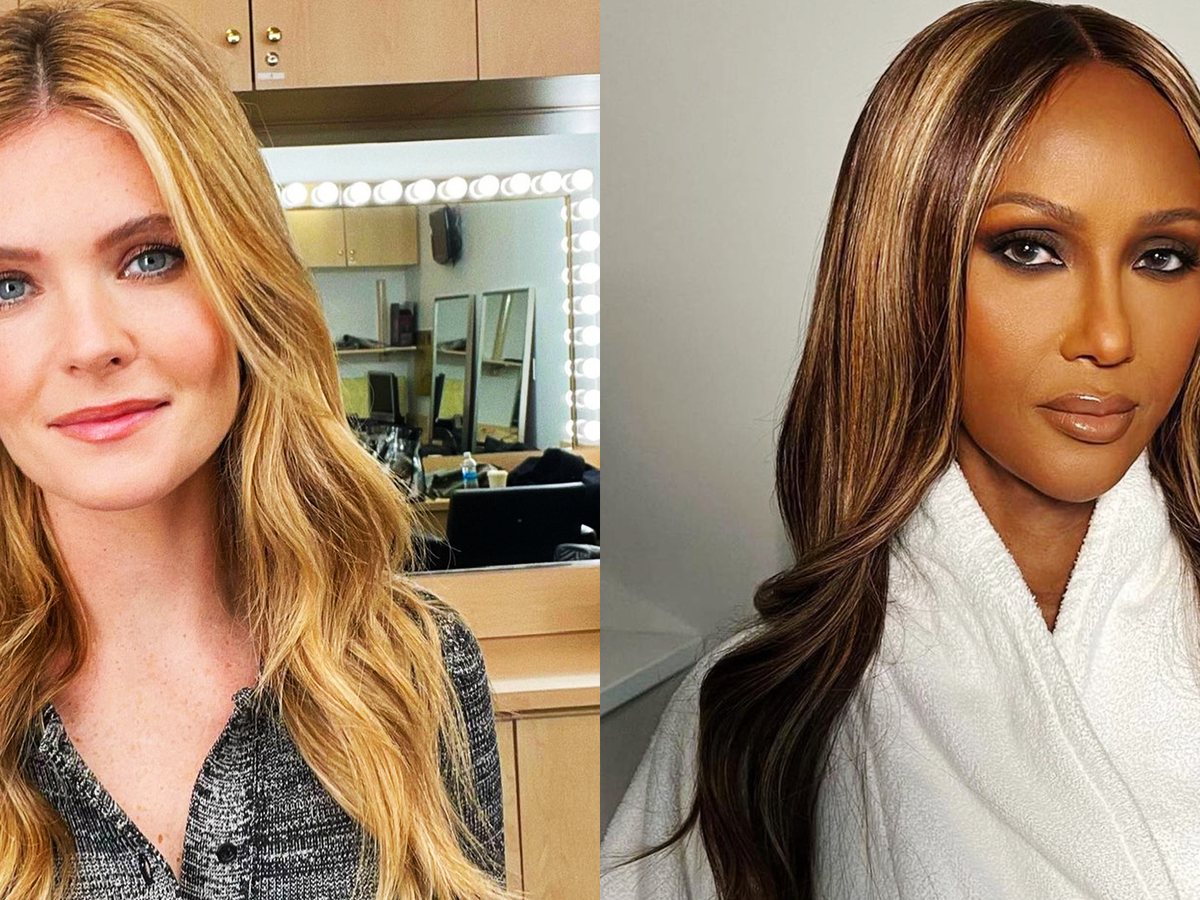
Stylish.ae’s Ultimate Guide To Choosing The Perfect Hair Shade(Opens in a new browser tab)
All About Undertones: Finding The Right Hair Color For Your Skin(Opens in a new browser tab)
Lighten Up With Stylish.ae: Best Blondes For Your Skin Tone(Opens in a new browser tab)

